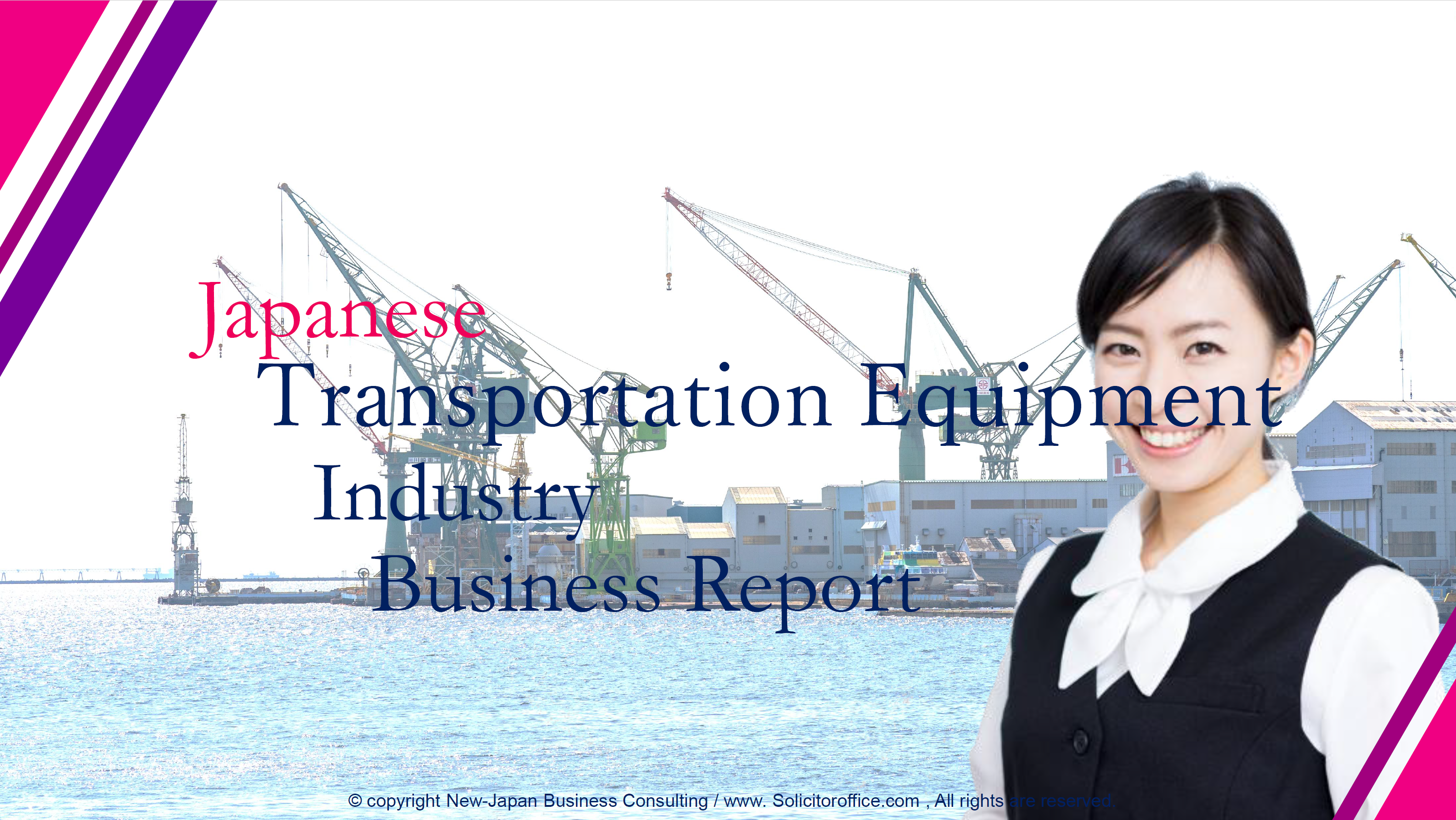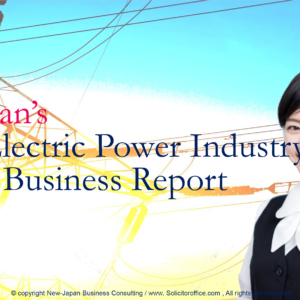説明
Japan’s Transportation Equipment Industry Is Driving the Future. Are You Ready to Capitalize?
Japanese Transportation Equipment Industry Report – 2025 Edition
A Strategic Market Intelligence Report for OEMs, Investors, Analysts, and Industry Professionals
Japan is one of the global leaders in transportation equipment manufacturing, producing everything from high-tech automotive components to world-renowned railway systems and cutting-edge industrial machinery. As one of the largest manufacturers of automobiles, aircraft, and railway equipment, Japan’s transportation equipment industry continues to evolve at an accelerating pace, driven by technological advancements, changing consumer preferences, and increasing environmental pressure.
The Japanese Transportation Equipment Industry Report – 2025 Edition provides deep insights into the forces shaping this critical sector. Whether you are an investor, supply chain manager, product developer, or strategy leader, this report will provide the data-driven intelligence and strategic foresight necessary to stay ahead in one of the world’s most competitive and innovative markets.
Why the Japanese Transportation Equipment Industry Deserves Your Attention
Japan’s transportation equipment sector is unique for its global reach, advanced manufacturing techniques, and ability to blend innovation with efficiency. At the heart of this industry are globally recognized players like Toyota, Honda, Kawasaki, Mitsubishi, and Hitachi—companies that not only dominate in their respective fields but also lead on technology, safety, and environmental standards.
Key Features of Japan’s Transportation Equipment Industry:
– 🏭 Diversified Manufacturing
Japan is known for its automotive, railway, aerospace, and industrial machinery production, with key players excelling in each sub-sector. Japanese companies are also global leaders in precision engineering and automated manufacturing systems.
– 🚗 Automotive Innovation
Japanese automakers have long been at the forefront of innovation, particularly in hybrid and electric vehicles (EVs). Japan has invested heavily in electric vehicle infrastructure, as well as autonomous driving technologies and next-generation mobility solutions.
– 🚉 Railway Excellence
Japan’s railway systems are a benchmark for the world. Known for its efficiency, punctuality, and advanced technology, Japan’s rail industry continues to grow with high-speed rail, bullet trains, and smart city transport solutions leading the way.
– ✈️ Aerospace and Aircraft Manufacturing
Japan’s aerospace industry, led by Mitsubishi Heavy Industries, has made significant advancements in commercial and military aircraft production. The country’s commitment to innovation in aviation technology is poised to see growth in both civilian and defense sectors.
– 🌍 Global Export Strength
Japan’s transportation equipment industry is a key driver of exports, contributing significantly to the national economy. In 2024, Japan exported nearly 4 million vehicles, with key markets including the United States, Europe, and ASEAN.
– 🌱 Environmental Responsibility & Regulations
Japan’s automotive and transportation equipment sectors are heavily influenced by environmental standards. The push toward carbon neutrality by 2050 and strict emissions regulations have led to increased investments in electric vehicles (EVs), alternative fuels, and hydrogen technologies.
Industries covered in this report are represented by the following companies
TOYOTA BOSHOKU CORPORATION
UNIPRES CORPORATION
TOYOTA INDUSTRIES CORPORATION
MORITA HOLDINGS CORPORATION
Sanoh Industrial Co., Ltd.
DENSO CORPORATION
TOKAI RIKA CO.,LTD.
Kawasaki Heavy Industries, Ltd.
NIPPON SHARYO, LTD.
MUSASHI SEIMITSU INDUSTRY CO.,LTD.
ShinMaywa Industries, Ltd.
KYOKUTO KAIHATSU KOGYO CO.,LTD.
TOPY INDUSTRIES,LIMITED
T.RAD Co., Ltd.
AKEBONO BRAKE INDUSTRY CO., LTD.
TACHI-S CO.,LTD.
NOK CORPORATION
FUTABA INDUSTRIAL CO.,LTD.
KYB Corporation
DAIDO METAL CO.,LTD.
PRESS KOGYO CO.,LTD.
PACIFIC INDUSTRIAL CO., LTD.
AISIN CORPORATION
Yamaha Motor Co.,Ltd.
EXEDY Corporation
TOYODA GOSEI CO.,LTD.
AISAN INDUSTRY CO.,LTD.
YOROZU CORPORATION
F.C.C. CO.,LTD.
SHIMANO INC.
TS TECH CO.,LTD.
JAMCO CORPORATION
#If you would like to purchase reports on these individual companies, please contact us as we can provide custom-made services.
What You Will Discover in This Comprehensive Report
This 258-page strategic report dives into all facets of Japan’s transportation equipment industry, offering actionable insights, market forecasts, and in-depth analysis of both present-day dynamics and future trends. Designed for business leaders and investors alike, this report is a must-read for anyone involved in automotive, rail, aerospace, or industrial equipment.
🔍 Key Sections Include:
1.1 Importance Of The Japanese Transport Equipment Industry
1.2 Role And Impact In The Economy
2. Historical Background Of The Japanese Transport Equipment Industry
2.1 Industrial Beginnings And Growth
2.2 Development During Post-War Reconstruction And Rapid Economic Growth
2.3 Bubble Economy And Subsequent Adjustment Period
2.4 Globalisation And Increased Competition In The 21st Century
3. Current Trends In The Japanese Transport Equipment Industry
3.1 Characteristics And Challenges Of The Domestic Market
3.2 Export Markets And The Competitiveness Of Japanese Firms
3.3 Addressing Environmental Regulation And Sustainability
3.4 Adaptability To Economic Fluctuations
4. Business Models Of The Main Transport Equipment Industries
4.1 Business Models Of The Automotive Industry
4.2 Aircraft Industry Business Models
4.3 Business Models Of The Rail Industry
4.4 Business Models Of The Shipping And Logistics Industry
4.5 Supplier And Subcontractor Business Models
4.6 Aftermarket Parts, Services, And Maintenance Models
4.7 Leasing, Subscription, And Usage-Based Business Models
4.8 Customization And Tailored Solutions Models
4.9 Platform-Based And On-Demand Models In Transport Equipment
4.10 Data-Driven And Telemetry-Based Business Models
5. Technological Innovations And New Developments
5.1 Automated Driving Technology And Its Commercialisation
5.2 Progress In Electrification And Environmental Response
5.3 Connected Cars And The Use Of Ai Technology
5.4 Innovative Technologies In Aircraft (E.G. Improved Fuel Efficiency, Electrification)
5.5 The Future Of Railways: From Bullet Trains To Linear Motor Cars
5.6 Automation And Robotics In Manufacturing Processes
5.7 The Integration Of Digital Platforms And Telematics In Fleet Management
5.8 The Role Of Electrification In Shaping New Business Models
5.9 Autonomous Systems And Their Potential Impact On Business Structures
5.10 Additive Manufacturing (3D Printing) And Custom Production Capabilities
5.11 Artificial Intelligence (AI) And Predictive Maintenance In Operations
6. Geographical Perspectives And Market Trends
6.1 Demand And Regional Industrial Development In Japan
6.2 Positioning Of The Transport Equipment Industry In The Asian Market
6.3 Competition And Alliances With European And Us Markets
6.4 Growth Strategies In Emerging Markets
7. Supply Chains And Partnerships
7.1 Global Supply Chain Structures And Challenges
7.2 Strategies For The Supply Of Critical Components And Materials
7.3 Cross-Industry Collaboration And Innovation
7.4 National And International Regulations And Their Impact
8. Current And Future Industry Trends Impacting Business Models
8.1 The Shift Toward Sustainability And Green Business Models
8.2 The Adoption Of Electrification And Clean Technologies In Equipment
8.3 Sharing Economy: The Rise Of Fleets And Mobility Solutions
8.4 The Increasing Role Of Big Data And AI In Operational Efficiency
8.5 Supply Chain Resilience And Adaptation To Global Disruptions
8.6 Consumer Demand For Flexible, On-Demand Transportation Solutions
9. Challenges In Adopting And Sustaining New Business Models
9.1 Managing Capital Expenditures And Financing Options For New Business Models
9.2 Technological Barriers To Scaling And Integration
9.3 Regulatory And Compliance Challenges Across Different Markets
9.4 Competition From Emerging Technologies And Industry Players
9.5 Market Demand Fluctuations And Volatility In Consumer Preferences
10. Strategies For Adapting And Innovating Business Models In The Transportation Equipment Sector
10.1 Identifying New Market Niches And Customer Segments
10.2 Leveraging Technological Advancements For Business Model Innovation
10.3 The Importance Of Agility In Adapting To Shifting Consumer Needs
10.4 Building Strategic Alliances And Partnerships For Long-Term Success
10.5 Managing Risk And Mitigating Potential Challenges In New Models
11. Conclusion
11.1 Strengths And Challenges Of The Japanese Transport Equipment Industry
11.2 Future Growth Strategies And Directions For Strengthening Competitiveness
11.3 Transition To A Sustainable Business Model
12. References And Additional Resources
12.1 Industry Reports And Market Data Sources
12.2 Recommended Literature On Innovation In The Transpo
Who Should Read This Report?
This report is indispensable for decision-makers and strategic leaders in various sectors of the transportation industry:
– OEMs, Tier 1 & Tier 2 Suppliers
Understanding the competitive landscape, market trends, and technological innovations across automotive, rail, and aerospace manufacturing.
– Investors & Private Equity Firms
Evaluating market opportunities, risks, and ROI in Japan’s transportation equipment sector, especially in EV infrastructure, green mobility, and aerospace technologies.
– Technology & Innovation Providers
Insight into automation, robotics, AI, IoT, and EV charging infrastructure that are shaping the future of transportation.
– Government & Regulatory Bodies
Examining Japan’s carbon-neutral ambitions, environmental regulations, and incentives for clean energy mobility.
– Consultants & Market Analysts
Providing data for future forecasts, industry strategies, and market entry advice for international players targeting Japan’s highly competitive transportation market.
Why Choose This Report?
– ✅ In-depth Analysis by Industry Experts – Created by seasoned consultants and industry specialists with first-hand knowledge of Japan’s transportation equipment market
– ✅ Actionable Insights – Direct strategic recommendations, SWOT analysis, and trend-based forecasts
– ✅ Comprehensive Coverage – Detailed insights into automotive, railway, aerospace, and industrial machinery manufacturing sectors
– ✅ Up-to-date Data – Fully updated for 2025 with the latest market trends, technological innovations, and regulatory updates
Secure Your Copy & Stay Ahead of the Curve
Product: Japanese Transportation Equipment Industry Report – 2025 Edition
Format: Digital PDF
Language: English
Length: 258+ pages
Price: 4,500 USD
✅ Instant download
✅ Secure checkout (Credit Card / PayPal)
✅ Free updates for 12 months
✅ Enterprise licenses available for larger teams
Purchase the Report Now
Need Customized Solutions or Enterprise Licensing?
We offer:
– Custom research reports tailored to specific transportation sectors or companies
– Bulk licensing options for teams or consultancy firms
– Strategic briefings on automotive electrification, rail innovation, and aerospace production
Contact us for personalized assistance or to request a quote for team licenses.
The Future of Transportation Equipment in Japan is Here—Be Part of It
The Japanese transportation equipment industry is at the intersection of tradition and innovation. With increasing global demand, the shift toward electric vehicles, smart mobility solutions, and green manufacturing practices, now is the time to understand the forces shaping the future of transport.
Gain the insights you need. Make strategic decisions. Lead in Japan’s transportation equipment market.
Don’t wait for the rest of the world to notice Japan’s resource strategy. Be the first to move — and the first to benefit.
Purchase the report trusted by industry leaders and innovators. Let this report be your compass.












